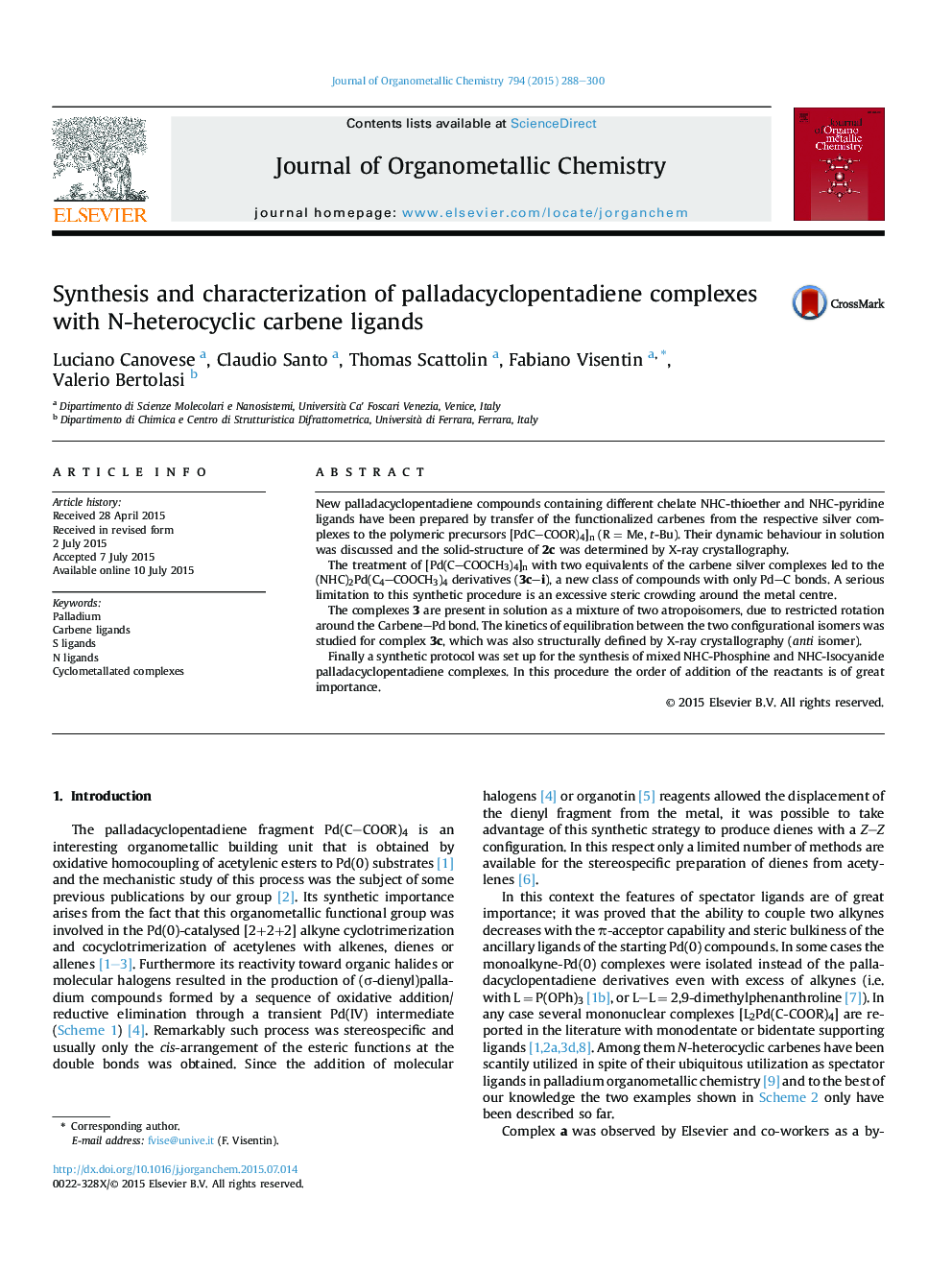| Article ID | Journal | Published Year | Pages | File Type |
|---|---|---|---|---|
| 1320816 | Journal of Organometallic Chemistry | 2015 | 13 Pages |
•Novel Palladacyclometallate complexes with NHC ligands were prepared.•Requirements and procedures to obtain κ1 or κ2 coordination mode were discussed.•Structures of the complexes were described in solid state and solution.•A kinetic study of the equilibration between two structural isomers was reported.
New palladacyclopentadiene compounds containing different chelate NHC-thioether and NHC-pyridine ligands have been prepared by transfer of the functionalized carbenes from the respective silver complexes to the polymeric precursors [PdC–COOR)4]n (R = Me, t-Bu). Their dynamic behaviour in solution was discussed and the solid-structure of 2c was determined by X-ray crystallography.The treatment of [Pd(C–COOCH3)4]n with two equivalents of the carbene silver complexes led to the (NHC)2Pd(C4–COOCH3)4 derivatives (3c–i), a new class of compounds with only Pd–C bonds. A serious limitation to this synthetic procedure is an excessive steric crowding around the metal centre.The complexes 3 are present in solution as a mixture of two atropoisomers, due to restricted rotation around the Carbene–Pd bond. The kinetics of equilibration between the two configurational isomers was studied for complex 3c, which was also structurally defined by X-ray crystallography (anti isomer).Finally a synthetic protocol was set up for the synthesis of mixed NHC-Phosphine and NHC-Isocyanide palladacyclopentadiene complexes. In this procedure the order of addition of the reactants is of great importance.
Graphical abstractFigure optionsDownload full-size imageDownload as PowerPoint slide
